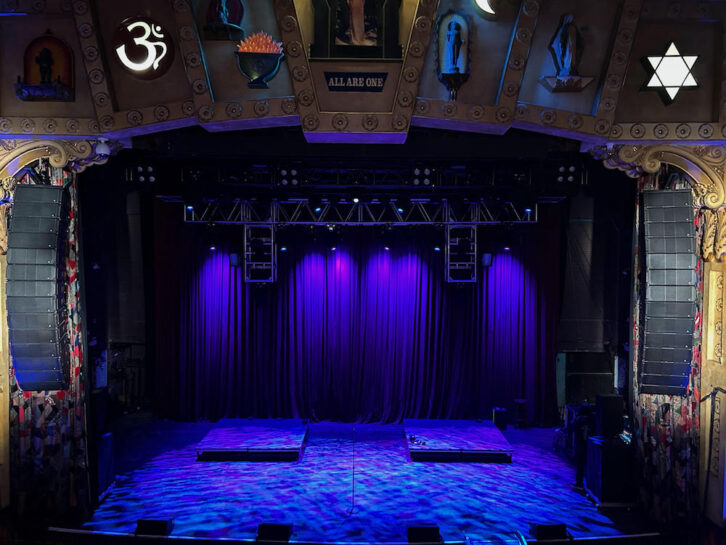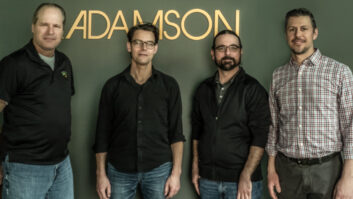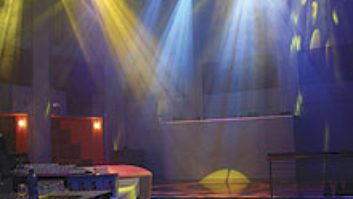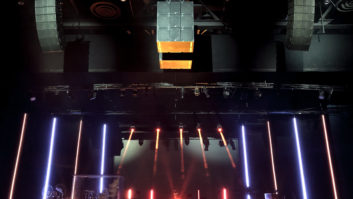
House of Blues concert halls have always served up fun shows, and with nearly a dozen venues across the U.S., the Live Nation-owned chain hosts a jaw-dropping 2,200 performances a year. Each location is different, however, with capacities ranging from 850 to 2,500, and until recently, the lighting and audio systems varied dramatically as well. That’s now changing, as HOB is nearly halfway through a three-year program to update and unify the house production elements across 10 venues.
David Helberg, Director of Production at Live Nation, recalled, “Our COO walked into a House and said, ‘This isn’t a great experience for the artists or the fans; how much would it cost to redo every House of Blues?’ Be careful what you wish for, though—we asked for a bunch of capital and suddenly we had to manage installations inside an active calendar.”
Helberg used it as an opportunity to augment the HOB brand identity through consistent lighting, audio and assisted listening systems, and opted to work with K2 for design; Clair Global’s Eighth Day Sound for system purchasing, prep and installation; and its own local crews to bring each new system to life. HOBs in Orlando, New Orleans, Houston and Chicago had new systems installed in 2022, but looking to make an immediate, chain-wide impact, Helberg also replaced every HOB console the first year, standardizing on Midas Pro2 desks and XTA MX36 console switching systems. “Consoles are so small these days that everyone brings their own,” he said. “The XTA can switch between three consoles with a button-push, because when you’re in the middle of a seven-band heavy metal night, if you have to do anything more than that, you’re screwed.”
When choosing the new HOB P.A., Helberg went with Adamson Systems Engineering, which handles manufacturing in its home base of Port Perry, Ontario. “When COVID hit, they were the only ones who could come to the table with assured shipping dates,” he said. “Not that everybody else wouldn’t have tried, but they were the ones that stepped up and said, ‘Yep, we can do this in the time allotted in the RFP.’” That said, for Helberg, it was Adamson’s response to the Houston venue’s design that sealed the deal: “We were looking to get some LF into the balconies and asked if they could split an array and put subs in the middle of it; they figured it out. Everybody else had a prescribed way to tell us how to use their gear, but for our application, given the time limits, Adamson listened with open ears.”
Republika Tribute Rocks Live in Immersive
Now all HOB installations are based around main hangs of Adamson CS10 intelligent line array cabinets controlled by an Adamson Gateway and AI Software; the CS10s each contain a pair of 10-inch Kevlar Neodymium transducers and a 4-inch compression driver. HOB standardized on powered models to reclaim as much stage footprint as possible, reduce cable lengths for better efficiency, and simplify the installations by using fewer components. Nonetheless, the systems are, by necessity, unique to each venue.
Chicago’s HOB, the fourth installation of 2022, was tackled in December. “We have a very small, very tall, horseshoe-shaped venue modeled on an opera house in Prague,” said Neil Gustafson, Production Manager for the site. “Front-of-house is 31 feet from the downstage edge and it’s three balconies that go straight up, all opera boxes, to an area affectionately known as Nosebleed.” While the main hangs are each 14 CS10s and there’s a dozen CS119 subwoofers on the floor, the top balcony is covered by an additional half-dozen flown CS119s and four more CS10s. He laughed, “In any other club, it’d be enough for a full rig, but that’s my balcony fill!”
Each installation has taken three days from tear-out to first show, with manufacturer, installation and house production teams present throughout. This year will see the process repeat at Las Vegas, Myrtle Beach and Cleveland HOBs, but back in Chicago, Gustafson is already thrilled with the long-awaited new system.
“Walking around the room, it feels great and I’m going to put that on the install team because they knew where we needed coverage,” he said. “Everyone’s digging it; no one’s pooh-poohing an Adamson rig, saying, ‘No, this is not my rider.’ They bring up a fader, pull the track they use to shoot the room and say, ‘All right, it’s all there.’ It’s crushing out front every night.”







